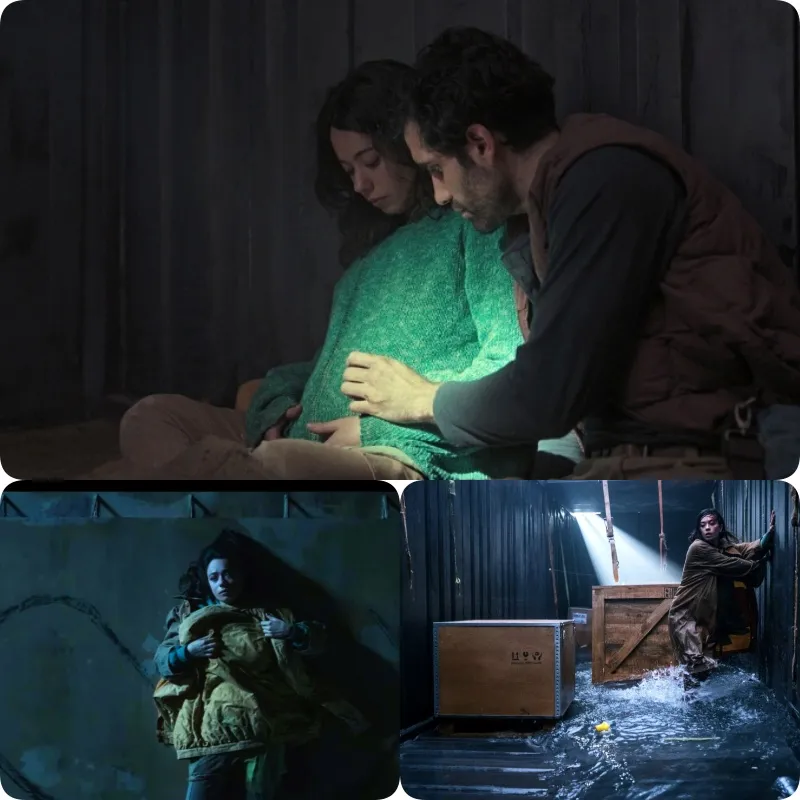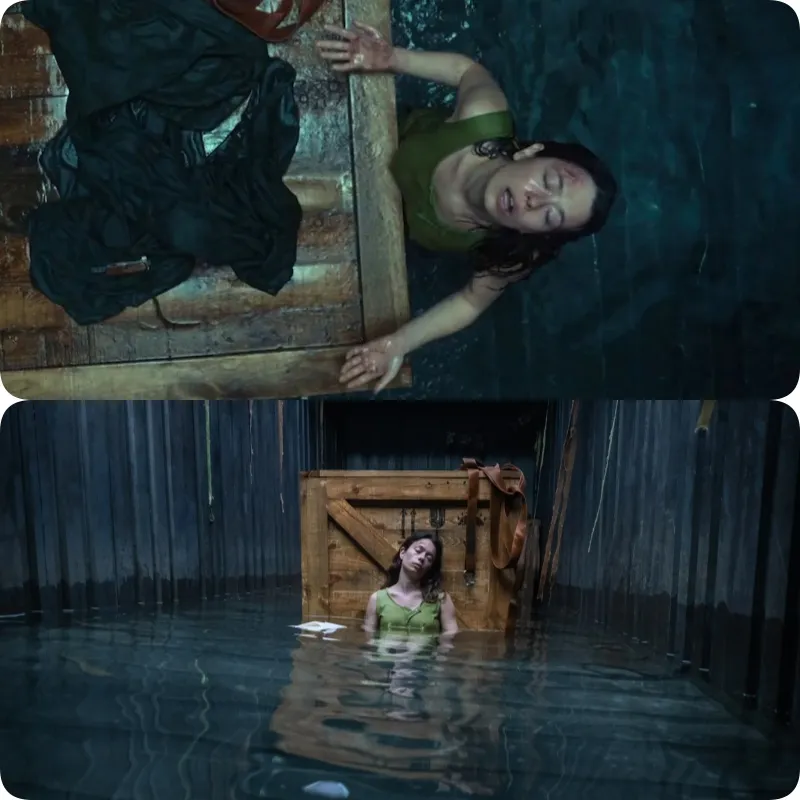
“Nowhere” – A Fight for Survival on the Open Sea
“Nowhere,” directed by Albert Pintó, tells the gripping story of Mia (played by Anna Castillo), a pregnant woman forced to fight for survival after fleeing her war-torn country to illegally immigrate to Ireland with her husband, Nico (Tamar Novas). In their desperate attempt to escape, Mia and Nico sacrificed all their possessions, including their wedding ring, to secure a place in a shipping container.

As the journey progresses, Nico is separated and meets a tragic fate, while Mia narrowly escapes death but faces a more harrowing challenge. During a stormy night, the shipping container capsizes, and Mia is thrown into the sea with it. Now, she must do everything possible to survive in the vast, unforgiving ocean while in labor.
With a runtime of 90 minutes, “Nowhere” guides viewers through Mia’s arduous journey as she struggles to protect her unborn child. Amidst the vast and relentless sea, there are moments when Mia feels overwhelmed by the hardships. However, the sensation of her baby moving inside her fuels her maternal strength, helping her persevere through the most difficult moments.
The film explores not only the survival story but also addresses significant social issues such as genocide and illegal immigration in Europe. Mia and Nico were forced to leave their country due to civil war, witnessing the brutal slaughter of many, including women and children. Their perilous escape represents their only hope for survival, but it comes with numerous risks. Despite not being detained, Mia faces significant obstacles that challenge her courage.

Mia is portrayed as a resilient woman who refuses to surrender to fate. Her bravery and resourcefulness in dealing with unexpected situations are remarkable. Mia’s fear of losing her child is intensified by the trauma of her previous miscarriage, making each moment of survival even more crucial.
The relationship between Mia and Nico adds emotional depth to the film. The filmmakers highlight their bond through supportive and motivating phone calls. Nico’s farewell to Mia and their unborn child is a poignant moment that moves many viewers. The war has torn their family apart, with Nico missing the chance to witness his child’s birth, while Mia is unable to reunite with her husband.
“Nowhere” maintains a fast pace to keep viewers on the edge of their seats. Although much of the film takes place in a confined space with a single lead actor, it remains engaging. The continuous sequence of pivotal events keeps the story intense and dynamic. Mia’s struggle with limited resources, including a few items such as headphones, plastic containers, a coat, a drill, and a pocket knife, adds to the film’s tension. She ingeniously repurposes these items, such as using the headphone wires to make a fishing net and the plastic container as a life raft.
Anna Castillo’s performance as Mia leaves a strong impression. She conveys bravery and determination on the outside while portraying deep inner pain and loneliness. The physically and emotionally demanding scenes, such as moving the shipping container and drilling through it, are executed with skill.

Before “Nowhere,” survival films set in nature like Cast Away (2000), Life of Pi (2012), and The Revenant (2015) had garnered acclaim. “Nowhere” advances the genre by raising the stakes, with the protagonist not only battling the ocean but also adapting to the confined space of the container.
The film has received mixed reviews from critics. Cinemanía praised Anna Castillo’s performance and the film’s engaging situation setups. However, Brian Tallerico of Film Threat noted that director Albert Pintó made some missteps in his approach, attempting to heighten Mia’s plight for emotional impact, and the unresolved death of the first child made it difficult for viewers to empathize with the character.



